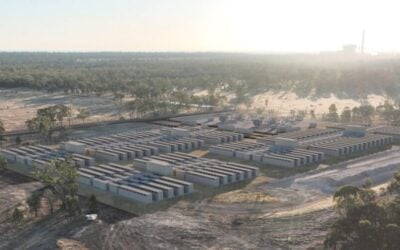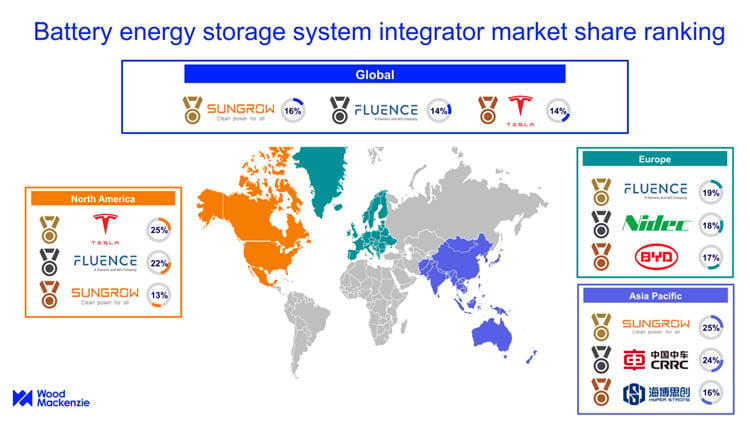Report on the Development of a Sustainable Energy System at Qinling Antarctic Research Station
This report details the development and implementation of an advanced clean-energy system at China’s Qinling research station in Antarctica. The project represents a significant contribution to several United Nations Sustainable Development Goals (SDGs), particularly SDG 7 (Affordable and Clean Energy), SDG 9 (Industry, Innovation, and Infrastructure), and SDG 13 (Climate Action).
Project Context: Aligning with Sustainable Development Goals
The initiative to power the Qinling station with renewable energy was driven by China’s “green expeditions” policy, which seeks to minimize the environmental footprint of polar research. This aligns directly with global efforts to protect fragile ecosystems and combat climate change.
Challenges to Sustainable Operations in Antarctica
Most Antarctic research stations rely heavily on diesel fuel, a practice that poses significant challenges to sustainability and runs counter to key SDG principles:
- Environmental Risk (SDG 13, 14, 15): Transporting and using diesel fuel creates a high risk of spills, which can cause long-lasting damage to Antarctica’s pristine terrestrial and marine ecosystems. Burning fossil fuels also contributes to climate change, which disproportionately affects polar regions.
- Logistical and Economic Inefficiency (SDG 12): The transport of diesel to the remote continent is logistically complex, expensive, and resource-intensive, representing an unsustainable model of consumption and production.
- Technological Barriers (SDG 7, 9): Conventional renewable energy technologies are not designed to withstand the extreme Antarctic conditions, which include:
- Temperatures below –40 degrees Celsius.
- Winds exceeding 300 kilometers per hour.
- Six months of continuous polar night, precluding solar generation.
An Integrated System for Resilient and Clean Energy (SDG 7 & SDG 9)
To overcome these barriers, a $14 million project led by Sun Hongbin of Taiyuan University of Technology developed and installed a bespoke renewable energy system. This project is a prime example of building resilient infrastructure (SDG 9) to provide affordable and clean energy (SDG 7) in a hostile environment. The system was tested in a specialized 2,000-square-meter lab that simulates Antarctic weather.
System Components and Technological Innovations
The integrated system is designed for year-round reliability and is managed by a smart grid to balance energy supply and demand. Its key components include:
- Wind Power Generation: Ten wind turbines were installed, featuring innovative designs to enhance resilience (SDG 9).
- An “eggbeater” style vertical-axis turbine with a low center of gravity to withstand high winds.
- Conventional turbines utilizing shorter, stronger blades made of carbon fiber, capable of operating at –50 degrees Celsius.
- Solar Power Generation: Twenty-six solar modules are mounted on a specialized frame made of fiber-reinforced plastic. This material has low thermal conductivity, preventing deformation in extreme temperature shifts.
- Advanced Energy Storage (SDG 7):
- Battery System: Frost-resistant lithium-titanate batteries are used, as their chemistry allows for effective charging and discharging in subzero temperatures. They are housed in a thermal case that recycles waste heat to maintain operational temperature.
- Hydrogen Energy System: To ensure a continuous power supply during the dark winter months, the system includes a renewable hydrogen component. An electrolyzer, powered by wind and solar, splits water to produce hydrogen, which is stored in high-pressure tanks. A fuel cell then converts the stored hydrogen back into electricity, with only heat and water as by-products.
Outcomes and Future Contributions to Global Goals
The renewable system is now operational and is projected to supply approximately 60% of the Qinling station’s average annual energy needs. This achievement marks a significant step towards decarbonizing scientific activities in Antarctica.
Advancing the Sustainable Development Agenda
- Demonstrating Viability (SDG 7): The project proves that a high percentage of renewable energy penetration is achievable even in the world’s most extreme climates, setting a new benchmark for clean energy.
- Fostering Innovation (SDG 9): The custom-engineered components provide a blueprint for developing resilient infrastructure applicable to other challenging environments.
- Protecting the Global Commons (SDG 13, 14, 15): By reducing reliance on diesel, the project directly mitigates local pollution risks and contributes to global climate action.
- Inspiring International Collaboration (SDG 17): The success of the Qinling system serves as a model for the 80+ other research stations in Antarctica, encouraging knowledge sharing and a collective transition toward sustainable operations.
The long-term objective is to achieve 100% renewable energy for all-year-round operations, fully realizing the vision of a sustainable and climate-neutral presence in Antarctica.
Analysis of Sustainable Development Goals in the Article
1. Which SDGs are addressed or connected to the issues highlighted in the article?
-
SDG 7: Affordable and Clean Energy
- The entire article focuses on the challenge and successful implementation of a “full-fledged clean-energy system” for China’s Qinling research station in Antarctica. It details the use of renewable sources like wind, solar, and hydrogen energy to replace traditional diesel generators, directly aligning with the goal of ensuring access to clean energy.
-
SDG 9: Industry, Innovation, and Infrastructure
- The article highlights significant innovation in developing resilient infrastructure. It describes the creation of new technologies designed to withstand extreme Antarctic conditions, such as specially designed wind turbines, frost-resistant lithium-titanate batteries, and a smart grid. The project involved a “$14 million” investment in research and development, including building a specialized lab to simulate Antarctic weather, which points directly to enhancing scientific research and upgrading technological capabilities.
-
SDG 13: Climate Action
- A primary motivation for the project is to mitigate the environmental impact of human activities in Antarctica. The article explicitly mentions that burning fossil fuels is “taking on the Antarctic ecosystem through climate change” and that the project is part of China’s push for “green expeditions.” By replacing diesel fuel with renewable energy, the project is a direct action to combat climate change and its impacts.
-
SDG 15: Life on Land
- The project aims to “protect Antarctica’s uniquely fragile environment.” The article discusses the high risk of diesel fuel spills, noting that “any contamination can have severe consequences on Antarctic soil and water.” The shift to a clean energy system is a crucial measure to prevent pollution and conserve the terrestrial ecosystems of the continent.
-
SDG 17: Partnerships for the Goals
- The article implies a theme of international cooperation and knowledge sharing. The comment from Kim Yeadong, chair of the Korean National Committee on Polar Research, that “Other stations will probably have to learn how they achieve that much clean energy,” suggests the project’s potential to serve as a model for other nations operating in Antarctica, fostering the dissemination of environmentally sound technologies.
2. What specific targets under those SDGs can be identified based on the article’s content?
-
Under SDG 7 (Affordable and Clean Energy):
- Target 7.2: “By 2030, increase substantially the share of renewable energy in the global energy mix.” The project aims to provide “half of the base’s average annual energy needs” with renewables, with the system currently producing “60 percent” of the total output and an ultimate goal of “100 percent renewable energy.”
- Target 7.a: “By 2030, enhance international cooperation to facilitate access to clean energy research and technology… and promote investment in energy infrastructure and clean energy technology.” The project, which took “$14 million to develop,” is a direct investment in clean energy infrastructure and advanced technology. The potential for other nations to learn from it supports the goal of facilitating access to technology.
-
Under SDG 9 (Industry, Innovation, and Infrastructure):
- Target 9.1: “Develop quality, reliable, sustainable and resilient infrastructure.” The article details the development of an energy system specifically engineered to be resilient against “temperatures that plummet below –40 degrees Celsius, winds of up to 300 kilometers per hour (kmh) and ferocious blizzards.”
- Target 9.4: “By 2030, upgrade infrastructure… to make them sustainable… with greater adoption of clean and environmentally sound technologies.” The project is a direct upgrade of the research station’s energy infrastructure, replacing polluting diesel generators with a sustainable system of wind, solar, and hydrogen power.
- Target 9.5: “Enhance scientific research, upgrade the technological capabilities… encouraging innovation.” The article describes a four-year research and testing process in a custom-built lab to develop innovative solutions like eggbeater-shaped turbines, carbon fiber blades, and specialized lithium-titanate batteries.
-
Under SDG 13 (Climate Action):
- Target 13.3: “Improve education, awareness-raising and human and institutional capacity on climate change mitigation.” The project is part of China’s institutional policy of “green expeditions” and serves as a powerful example of climate change mitigation in one of the world’s most challenging environments, thereby raising awareness and building capacity.
-
Under SDG 15 (Life on Land):
- Target 15.1: “ensure the conservation… and sustainable use of terrestrial… ecosystems.” The project’s goal to “keep the continent clean” directly addresses the conservation of Antarctica’s terrestrial ecosystem by minimizing the risk of pollution.
- Target 15.5: “Take urgent and significant action to reduce the degradation of natural habitats.” By moving away from diesel, which has led to spills at “every station that has oil or other fuels,” the project is a significant action to reduce the degradation of the pristine Antarctic habitat.
-
Under SDG 17 (Partnerships for the Goals):
- Target 17.7: “Promote the development, transfer, dissemination and diffusion of environmentally sound technologies.” The project is a successful development of environmentally sound technology for polar regions, and the article notes its “remarkable” achievement could be a model for other research stations, promoting its potential diffusion.
3. Are there any indicators mentioned or implied in the article that can be used to measure progress towards the identified targets?
-
Explicit Indicators:
- Renewable energy share (Indicator 7.2.1): The article provides clear figures: the system should provide “half of the base’s average annual energy needs,” is currently producing “60 percent” of the overall output, and the ultimate goal is “100 percent.”
- Financial investment in R&D (related to Indicator 9.5.1): The article specifies the project cost “$14 million to develop,” which serves as a direct measure of investment in clean energy innovation.
- Physical infrastructure components: The article lists the specific number of installations: “10 wind turbines, 26 solar modules, a hydrogen energy system, a container full of frost-resistant lithium-ion batteries.”
-
Implied Indicators:
- Reduction in fossil fuel consumption: The success of the project can be measured by the reduction in the use of diesel fuel, which the article states is what the “vast majority of stations still depend on.”
- Reduction in CO2 emissions (related to Indicator 9.4.1): A direct consequence of reducing diesel consumption is a significant decrease in greenhouse gas emissions, a key measure of climate action.
- Reduction in pollution risk: Progress can be measured by the reduced risk of environmental contamination. The article notes, “Every station that has oil or other fuels has had spills,” so a reduction in fuel transport and storage directly lowers this risk.
- Number of research and development personnel (related to Indicator 9.5.2): The article mentions key personnel like “electrical engineer Sun Hongbin” and his team, implying that the number of researchers dedicated to such projects is a measure of commitment to innovation.
4. Table of SDGs, Targets, and Indicators
| SDGs | Targets | Indicators Identified in the Article |
|---|---|---|
| SDG 7: Affordable and Clean Energy | 7.2: Increase the share of renewable energy. 7.a: Promote investment in clean energy infrastructure and technology. |
|
| SDG 9: Industry, Innovation, and Infrastructure | 9.1: Develop resilient infrastructure. 9.4: Upgrade infrastructure with clean technologies. 9.5: Enhance scientific research and innovation. |
|
| SDG 13: Climate Action | 13.3: Improve capacity on climate change mitigation. |
|
| SDG 15: Life on Land | 15.1: Ensure conservation of terrestrial ecosystems. 15.5: Reduce the degradation of natural habitats. |
|
| SDG 17: Partnerships for the Goals | 17.7: Promote the development and diffusion of environmentally sound technologies. |
|
Source: scientificamerican.com







